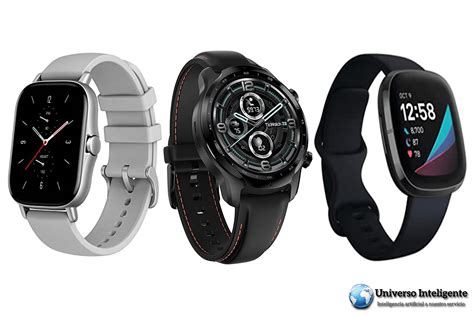Why Your Gym Clothes Stink: The Root Cause
There’s nothing quite like the satisfaction of a great workout, but the lingering smell on your gym clothes can quickly dampen the post-exercise glow. This persistent odor isn’t just sweat; it’s a potent mix of sweat, bacteria, and the synthetic fibers (like polyester, nylon, and spandex) commonly used in athletic wear. These technical fabrics are designed to wick moisture away from your body, but their tight weave can also trap bacteria and body oils, making them particularly prone to harboring unpleasant smells that standard washes often fail to eliminate.
Understanding the enemy is the first step to winning the battle against gym clothes stink. Regular detergents might clean surface dirt, but they often don’t penetrate the fabric deeply enough to eradicate the odor-causing bacteria that multiply rapidly in warm, damp environments. Moreover, improper washing and drying habits can exacerbate the problem, leading to a build-up that makes your clothes smell stale even right out of the wash.

Pre-Wash Prep: The First Line of Defense
The journey to fresh gym clothes begins even before they hit the washing machine. Proper pre-treatment can make a significant difference in tackling stubborn odors.
Don’t Let Them Linger
After a workout, resist the urge to toss your sweaty clothes directly into the laundry hamper or, worse, leave them in your gym bag. Trapping damp, sweaty fabric creates a perfect breeding ground for bacteria. Hang them up to air dry immediately, or at least spread them out until you’re ready to wash them. This simple step can prevent the immediate colonization of odor-causing microbes.
Pre-Soak for Stubborn Stink
For particularly pungent items, a pre-soak can work wonders. Fill a basin with cool water and add half a cup of white vinegar or a quarter cup of baking soda. Submerge your gym clothes for 30 minutes to an hour before washing. Both vinegar and baking soda are natural deodorizers that help neutralize odors and break down residue.

Mastering the Wash Cycle
The actual washing process is where you can make the most impact. Following these steps will ensure your gear gets a thorough clean.
Choose the Right Detergent (and Amount)
Avoid using too much regular detergent, as the excess can get trapped in the fabric, contributing to a greasy build-up that locks in smells. Instead, opt for a sports-specific detergent designed to break down sweat and oil molecules. If you don’t have one, a small amount of regular detergent combined with a laundry booster like Borax or a specialized odor eliminator can be effective.
Water Temperature Matters
Wash gym clothes in cold water. Hot water can damage the elastic fibers and technical properties of your athletic wear, and it can also set in protein stains like sweat. Cold water is sufficient for cleaning and is gentler on delicate fabrics, helping them maintain their shape and wicking capabilities.
Don’t Overload the Machine
Give your clothes space to move freely in the washing machine. An overloaded machine won’t clean effectively, as items won’t get adequately rinsed, leading to detergent residue and lingering odors. Wash gym clothes separately from cotton items, as cotton lint can cling to performance fabrics, making them less effective.

Drying for Freshness: A Critical Step
How you dry your gym clothes is just as important as how you wash them. Improper drying can undo all your hard work.
Air Dry Whenever Possible
The best method for drying athletic wear is air drying. Hang your clothes on a line or drying rack, preferably in a well-ventilated area or outdoors. The sun’s UV rays can also help kill bacteria and naturally bleach out stains. Air drying prevents heat damage to elastic fibers and reduces static cling.
If Using a Dryer, Go Low Heat
If you must use a dryer, select the lowest heat setting or an air-fluff cycle. High heat can damage the synthetic fibers, reduce their elasticity, and make them less effective at wicking moisture. Remove items as soon as they are dry to prevent wrinkles and static build-up. Avoid using dryer sheets, as they can leave a waxy residue that clogs the fabric’s pores, trapping bacteria and odors.

Storage and Ongoing Care
Once clean and dry, proper storage helps maintain freshness and fabric integrity.
Store in a Breathable Space
Ensure your gym clothes are completely dry before putting them away. Store them in a clean, dry, and well-ventilated drawer or closet. Avoid cramming them into tight spaces, which can trap any residual moisture or odors.
Regular Maintenance
Periodically check your washing machine for mold or mildew, especially if you notice a persistent musty smell on your laundry. Run an empty hot wash cycle with vinegar or a washing machine cleaner every few months.

Common Mistakes to Avoid
- Fabric Softeners: Avoid them! They clog the moisture-wicking pores of technical fabrics, trapping bacteria and odors.
- Bleach: Can damage synthetic fibers and cause discoloration. Use a color-safe alternative for sanitizing.
- Over-washing: While tempting, excessive washing can wear down fabrics. Focus on effective washing techniques rather than frequent, ineffective ones.
- Skipping the Air Dry: Rushing to put away damp clothes is a guaranteed way to invite stink back.
Conclusion
Battling gym clothes stink is an ongoing process, but with the right techniques, it’s a battle you can win. By incorporating proper pre-treatment, careful washing, and thoughtful drying methods into your laundry routine, you can keep your athletic wear smelling fresh, performing optimally, and lasting longer. Say goodbye to pungent workout gear and hello to a cleaner, more enjoyable fitness experience.




